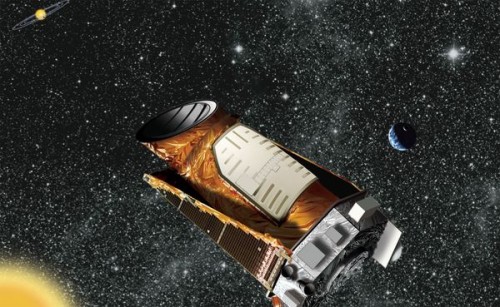NASA is looking for new roles for the Planetary Observatory

The Kepler telescope is shut down but not definitively. Kepler was NASA's main instrument for detecting planets outside the solar system until May 2013. A mechanical malfunction then disrupted the spacecraft's ability to stabilize in a precise direction in space, and thus the telescope's ability to discover small planets, perhaps similar to Earth in other solar systems.
But space telescopes, even after a malfunction, are prohibitively expensive, so NASA has issued a request for proposals for another use of Kepler. In response, scientists proposed more than 40 new missions for the spacecraft. Some of them are different ways to continue the search for planets, and others show completely new directions. Here are outlines of four interesting plans for Kepler's next incarnation.
Beyond the Milky Way
If Kepler is directed to regions crowded with bright galaxies, it will be able to search for ravenous black holes and identify stars that are expected to explode in supernovae. It is even possible that it will have the sights of a supernova in its occurrence, the likes of which we have not yet seen. Even in its damaged state, "there is no existing or planned facility that can observe a supernova as well as Kepler," as the researchers wrote in their proposal.
star tremors
Just as earthquakes shake our world, "stellar tremors" shake suns and cause brightness changes that teach about the internal dynamics of the star. Kepler can be used for astro-seismology: tracking stellar tremors in the Milky Way star cluster NGC 2244. This cluster is full of massive, hot stars of a type we know little about.
Waves of blue
Watching the fluctuations of Neptune, which brightens and dims according to the circular course of the heat inside it, will testify to the structure of this planet. "We don't really know what's inside this giant planet," says Mark Marley of NASA's Ames Research Institute.
Caution falling rocks
Kepler will be able to accelerate the discovery of nearby asteroids, many of which are large enough to cause heavy damage to the Earth (although most of them are smaller than the asteroid Eros, pictured). "Kepler can look into the Earth's orbit - this is an area where we don't have a lot of information about near-Earth objects," says Kevin Stevenson of the University of Central Florida.
The article was published with the permission of Scientific American Israel

2 תגובות
not interesting